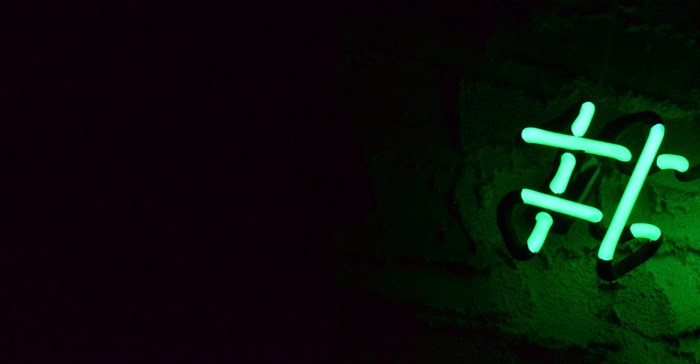The hashtag is officially 15 years old today! Let's explore how they've changed over the years and how to make the best use of them across all social media platforms.
The pound symbol on your keyboard — also called an octothorpe — was initially used to mark numbers and was first used for hashtags in 2007 by Chris Messina.
Twitter’s organisational structure initially relied on hashtags to categorise hot discussions. Now, hashtags are used across all social media platforms for trends, events and sometimes to add context to a caption or post. But are they still relevant?
The life cycle of an internet trend typically starts with being embraced by early adopters and tastemakers, particularly the young. Next, an explosion of popularity led to inescapable ubiquity. Finally, death by overexposure and an afterlife of continued usage are reserved solely for parents and the terminally uncool. #Blessed anyone?
While Gen Z cringes at the overuse (and bad use) of hashtags; the basics of content discovery and content-categorising are still the same: hashtags. Hashtags are clickable links and are used to categorise or index content and hashtags are also used as a reference for the Instagram algorithm, so it can categorise your content and suggest it to users it thinks will have a high interest.
I don’t Google – I TikTok
Typically a space for entertainment, TikTok is fast becoming the go-to search platform for Gen Z where they make use of both hashtags and keywords to search. On Twitter, where hashtags first began, the daily trends are a mix of both topics or keywords and hashtags, and the platform also offers keyword targeting for advertisers.
Google’s senior vice president, Prabhakar Raghavan, said, “In our studies, something like almost 40% of young people, when they’re looking for a place for lunch, they don’t go to Google Maps or Search. They go to TikTok or Instagram.”
While Instagram is also slowly making the pivot towards semantic keyword search, meaning words in your captions or the topics in your videos will become searchable too, Instagram shared this guide for creators in 2021 which points out the do’s and don’ts of hashtag use, which includes only using between three to five hashtags.
Hashtags have plenty of uses beyond improving your discoverability. You can use them for community-building, sourcing user-generated content (UGC), running campaigns, challenges or competitions, researching your audience, and more.
Hashtags are also used as a reference for social media algorithms, so it can categorise your content and suggest it to users it thinks will have a high interest. Despite the shift and platform updates, hashtags still have a role to play in taking your business to new heights, but if used too frequently or without a clear strategy in mind, they become pointless and inefficient. Here are a few steps that can help you build a non-cringey hashtag strategy.
Mapping out your hashtag strategy
There are typically five types of hashtags:
- Location: places, neighbourhoods, cities and countries
- Branded: campaigns, events, initiatives, or your brand
- Industry: your business niche
- Community: specific group of people
- Descriptive: content of your actual post
Research to make sure you're using existing hashtags the right way, to prevent inappropriate newsjacking and to ensure you don't take over a hashtag that's already popular for another use. This research can be done natively in the search tabs of each platform or by using a tool to discover further hashtags.
Be sure to:
- Check the Instagram banned list to ensure you’re not shadow banned on the platform
- Analyse which hashtags are popular among your competitors and target audience
- Look at the volume of posts per hashtag as using ultra-popular hashtags isn’t always the best strategy for getting more engagement on your posts and stories, as they’re less likely to be seen.
Short hashtags are always better. Ideally, your hashtags should be under 11 characters -- shorter if you can. To make sure your hashtags are accessible to those using screen readers, be sure to capitalise each word of your hashtag. This isn't a common practice but it can be incredibly helpful to people who rely on screen readers to consume content. Don't create a hashtag that only uses caps lock (unless the hashtag is an acronym).
Again, as they are clickable links, it’s best not to use more than two per post and if you want your audience to click somewhere else (a button, an image, or a link), it’s best to use only one with a stronger CTA for the link click.
Know the objective of the hashtag you’re using, is it a way to categorise your event's content or a call-to-action?
For both examples, it’s important to let users know how to use your hashtag (and give them a reason to). Instagram recently advised that creators should use between three to five hashtags on their posts, despite allowing up to 30 per post. You can make use of your post analytics to see how many people discovered you through certain hashtags and continue to test the usability.
For now, the humble hashtag is still relevant - the key lies in how you use it.






























